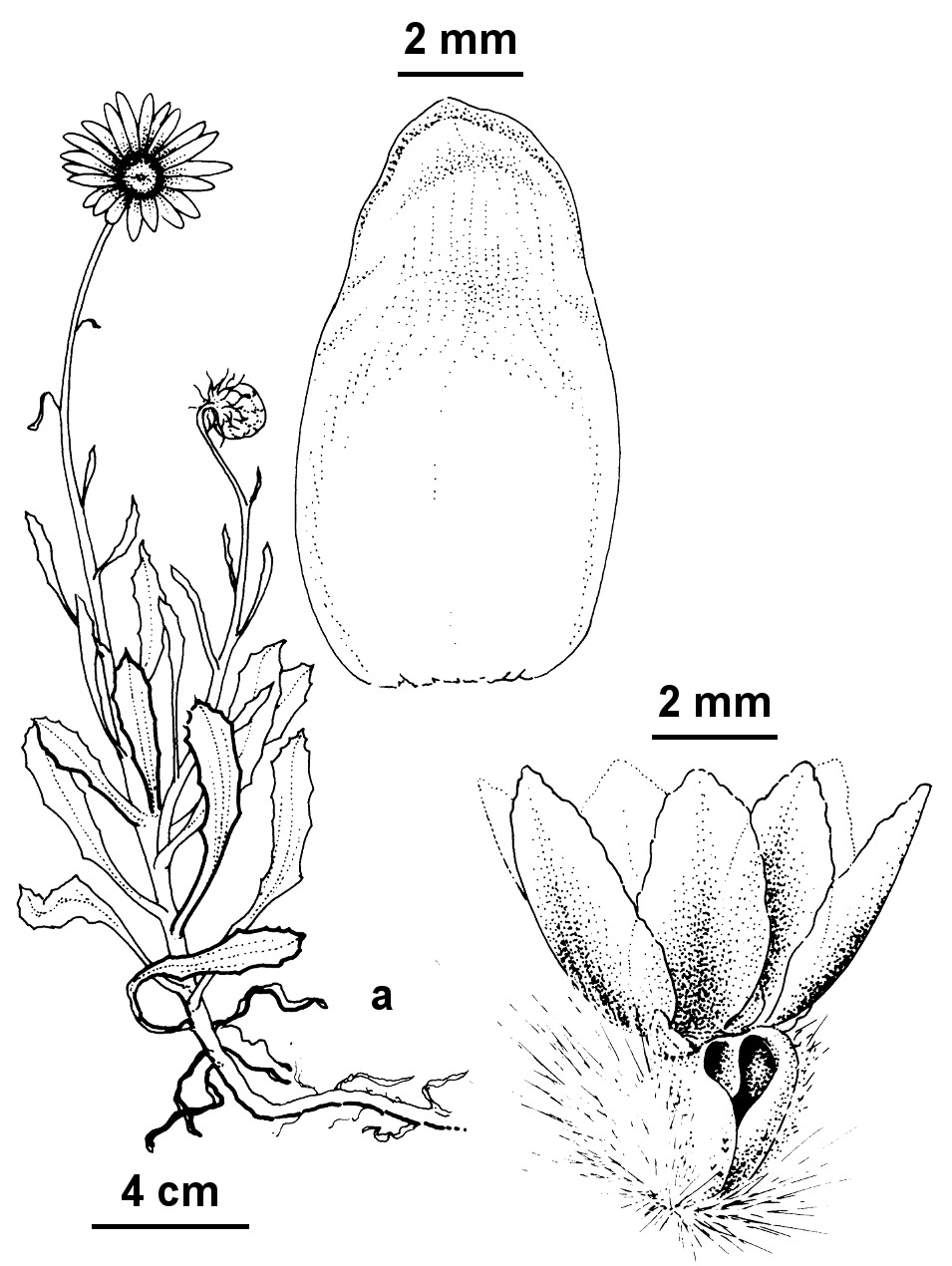Arctotis stoechadifolia
P.J.Bergius Silver ArctotisProstrate to ascending grey-tomentose perennial herb to 80 cm high, becoming woody at base. Leaves sessile, cauline, oblanceolate to lyrate-pinnatisect, mostly 4–10 cm long and 5–30 mm wide, margins irregularly toothed, surfaces both grey-tomentose, more densely so beneath. Capitula terminal, hemispherical, 15–25 mm diam.; involucral bracts ovate to broad-lanceolate, 2–20 mm long, c. 5-seriate. Ligules oblong, 25–30 mm long, obscurely 3-lobed, white, cream, orange above, usually with darker contrasting band just above base, mauve below, or wholly mauve-purple (see note below). Disc florets purplish-black. Cypselas 3–4 mm long, densely sericeous, 5-ribbed, 2 ribs longer and incurved; pappus scales 7 or 8, 3–4 mm long, pinkish. Flowers spring and summer.
LoM, Wim, VVP, VRiv, GipP, OtP, HSF, Strz. Also natu-ralized WA, SA, Qld, NSW, Tas. Native to South Africa. Apparently a garden-escape now naturalised near Barwon Heads, Hawkesdale, Rosebud and Warburton.
Application of species names in Arctotis is complicated, due at least partly to a long history of hybridisation and selection for colorful garden forms. While strictly, A. stoechadifolia has capitula with pale ligules, and most naturalised occurrences are of this type, bright mauve or purple forms are cultivated and likely to spread also.
Jeanes, J.A. (1999). Asteraceae. In: Walsh, N.G.; Entwisle, T.J., Flora of Victoria Vol. 4, Cornaceae to Asteraceae, pp. 652–666. Inkata Press, Melbourne.
 Spinning
Spinning




